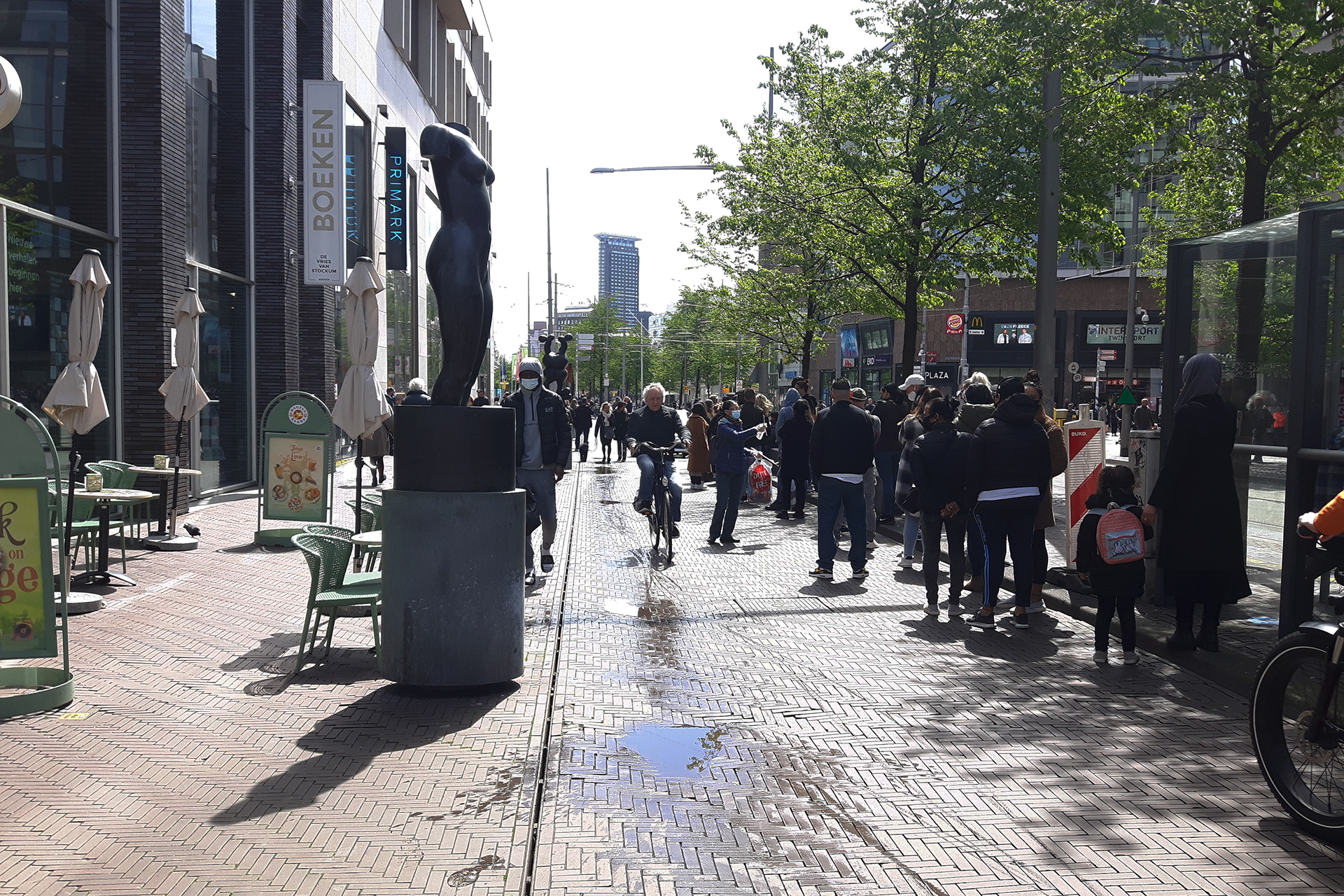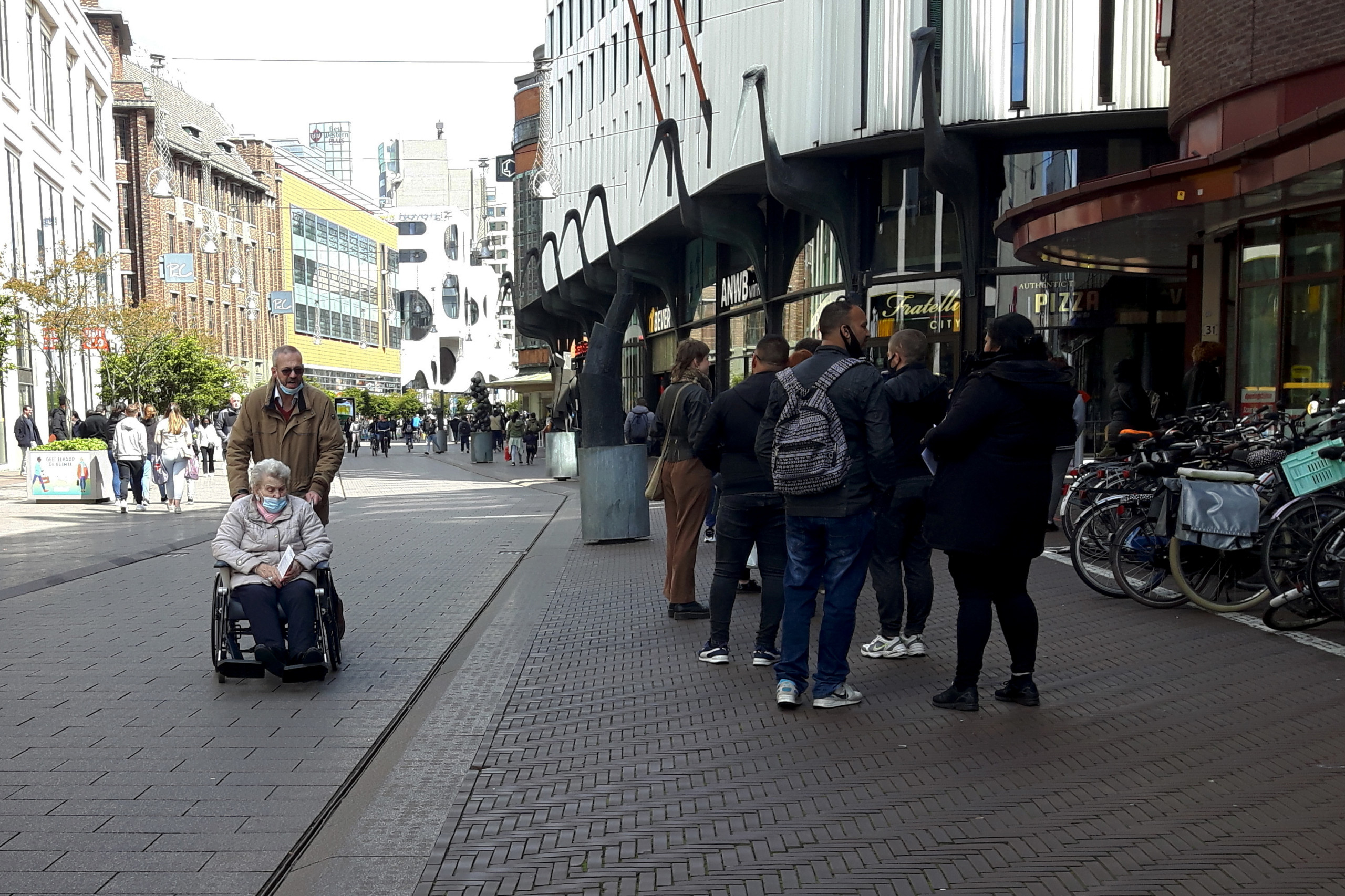Accessibility / COVID-19 / Pedestrians
Pedestrians in the new normal: The challenge of space for everyone
The past six months or so have been rough for the majority of places around the world. In the Netherlands, a typical grey, rainy Dutch winter paired with lockdown left us with little to do beyond our front doors. Still, given these limitations, I took to going on regular walks through The Hague. With nothing open other than supermarkets, these walks have taught me to enjoy walking for what it is, rather than for the destination to which I’m going.
Some days I cover new ground, visiting neighbourhoods I have never been to. On others, I take my standard routes, passing similar buildings and even similar people.
Throughout this and the previous lockdown, the city became a pedestrian paradise. Business owners, acknowledging the lockdown would last more than just a few weeks, put the furniture and displays that normally populate the area in front of their shops (otherwise know in Dutch as the “stoep”) into storage. Sidewalks became obstacle-free, and with many people largely working from home, fewer parked cars lined the streets and there was a noticeable absence of bicycles and scooters on the sidewalks.
More recently however, the quality of my daily walks has changed. When terraces and patios in the Netherlands were given permission to reopen in late April, and shops no longer requiring customers to book an appointment beforehand, the activity that had disappeared from the public realm began to reclaim its space, and thensome. While many of us–myself included–are rejoicing in being able to meet up for a drink or bite to eat outside our homes again, it seems it has come at the expense of any lessons about pedestrian access learned during lockdown. Just like that, we went from a pedestrian paradise, to the same-old same-old, or maybe worse.
Within the month since businesses reopened, sidewalks are once again punctuated with signage and displays. Additionally, however, a new use of the sidewalk use has emerged: Queues. Limited capacity to ensure physical distancing in shops means that queues quickly form in front of shop entrances, often taking up the entire frontage of the building. While not all countries are in the same stage of reopening, or may be taking a different approach, we can still be proactive, looking abroad to find examples of what works, but also to see what doesn’t.

The lineup outside of Primark in The Hague, crossing the cycle track adjacent to the tram stop
This lesson is particularly important in places where the pedestrian realm remains relatively underdeveloped and where the car still dominates. Thinking we can reopen everything and have the public realm function the same way as it did three years ago is short-sighted. Already limited pedestrian realms will only become more dangerous as queues and signage slowly nudge people towards the roadway. Examples from the UK and Canada show sidewalk extensions taking over on-street parking to accommodate both pedestrian movement and queueing with ample space for physical distancing. In the Netherlands, some former shared space for cyclists and pedestrians have been handed over entirely to foot traffic. The challenge, however, is to now find the balance between supporting the economic recovery of businesses with patio extensions and outdoor displays without sacrificing the space given to pedestrians.
At the same time, unless significant traffic calming measures are explored and implemented on a long-term basis in order to reduce the speed and volume of cars and provide a comfortable space for people (rather than cars), being so close to fast moving vehicles will not continue to foster an inviting or comfortable pedestrian environment.

Beyond the concern of public health, ensuring sufficient pedestrian space is also a matter of accessibility and equity. Having to snake through the crowds and the variety of objects on the sidewalks myself, I recall visiting Amsterdam with my father a number of years ago. He uses a cane when walking and is a bit unstable on his feet, and seeing how many physical obstacles stood in the way of his free movement, I became accutely aware of how the prevelance of cycles, scooters, benches, cars, and any other items cluttering the already narrow sidewalk are a hazard to those with mobility issues. Navigating the sidewalks of Amsterdam often felt like a maze. We were constantly making detours to find a space that was wide enough for two feet and a cane. If I was frustrated, I can only imagine what it must be like for him and those who have to get around like that everyday, especially for individuals who move around the city in wheelchairs or mobility scooters.
Although the lockdown was hard on businesses, the economy, and our social lives, we should not overlook the progressive steps make to create more room for pedestrians, or go even further and start taking back the space handed over to more human forms of travel. Many scientists have warned that if we don’t make significant changes, COVID-19 is likely just one of many pandemics to come in the future. We’ve nearly made it through this one. We know how to adapt our streets and public spaces to accommodate for it. So why not make a more concrete plan for it?
As we cautiously come out of lockdown, we need to take a critical look at our public spaces: Do they work for everyone? Is there sufficient and safe space? Can we create a better space that works for both businesses and residents?
Someone famous once said, “Never let a good crisis go to waste,” and when it comes to the lockdown’s effect on mobility behaviour, this could not be further from the truth.
 ">
">Stephen Kurz
‘Though we are strongly influenced by our environment, effective urban design can help us make sustainable, healthy, and safe choices. Not because we’re more aware of our choices, but because we’re not. Good urban design makes the ‘right’ choice easy. To achieve this, I value non-traditional approaches to exploring and developing solutions to urban issues.’

